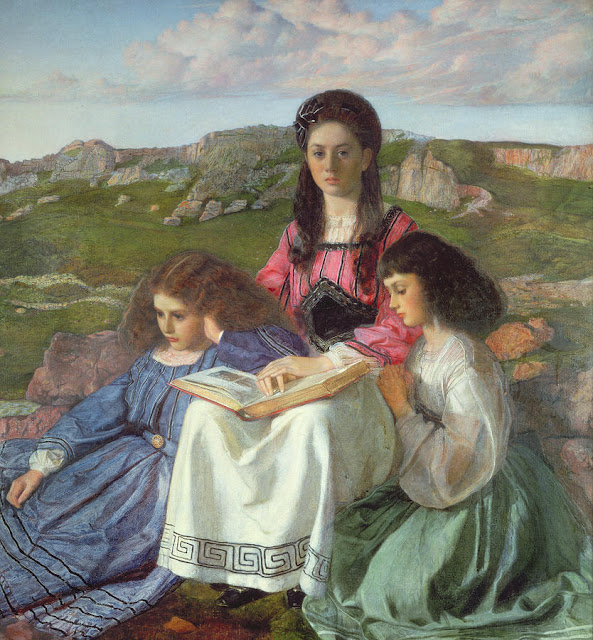(Above: the boating party listen to the story of Alice, Alice in Wonderland (1986 BBC) Dir: Barry Letts)
Today officially marks so called "Alice's day" (Or at least, that's what Oxford calls it now) when, in 1862, Charles Dodgson/Lewis Carroll started to tell the Alice stories to the Liddell sisters and Robinson Duckworth on Oxford boating trips. This by Karoline Leach:
Summer of 1862. Charles Dodgson is telling the ‘Alice’ story to the three famous sisters, Ina, Alice and Edith Liddell, while on their famous river-trips. Indications are the girls loved the tale and were always begging for new instalments, but that Dodgson was less enthusiastic (on one occasion he calls it the ‘interminable’ Alice’s Adventures, and is peeved because he wants to sing them a new song he just made up instead). At around the same time Alice asks him to write her story down. He promises he will do so.
Whilst the actual writing of the story would take Dodgson over 6 months to start, the germ of what would become Alice's adventures Underground and, world famous as Alice's adventures in Wonderland, indeed started on these boating trips between friends, the story's episodic structure reflects this, as do the in jokes made for the 4 listeners of the tale. Even if Dodgson was less enamoured with having to continually come back to the Alice story and add extra episodes. The world is forever glad he did!
(Above: The Three Liddell sisters, 1864, Lorina (seated) Alice (Left) and Edith (right) captured in the artwork The Sisters by Sir William Blake Richmond)
Today's recommendation is Alice in Wonderland (1986 BBC) which begins at this very first storytelling boating trip, on the 4th of July. Kate Dorning plays a dual role in this version. She plays both a quiet Alice Liddell, and a delighfully eccentric, wild Alice. For once the two look different, perhaps reflecting that Dodgson never saw his fictional creation as actually being Alice Liddell herself!
Of course Alice160 celebrations will be all year round this year, but the epicentre, as always, is Oxford. Alice's day celebrations are tomorrow there. If you can't make it, there's a whole list of events worldwide that I've curated here, including at home options. For reading recommendations, I VERY much recommend Macmillan's complete Alice for English language readers, and Jenny Woolf's biography the Mystery of Lewis Carroll (originally published 2010) which is available in English and Japanese editions.
Whichever way you decide to celebrate, have a wonderful July 4th, and July!









